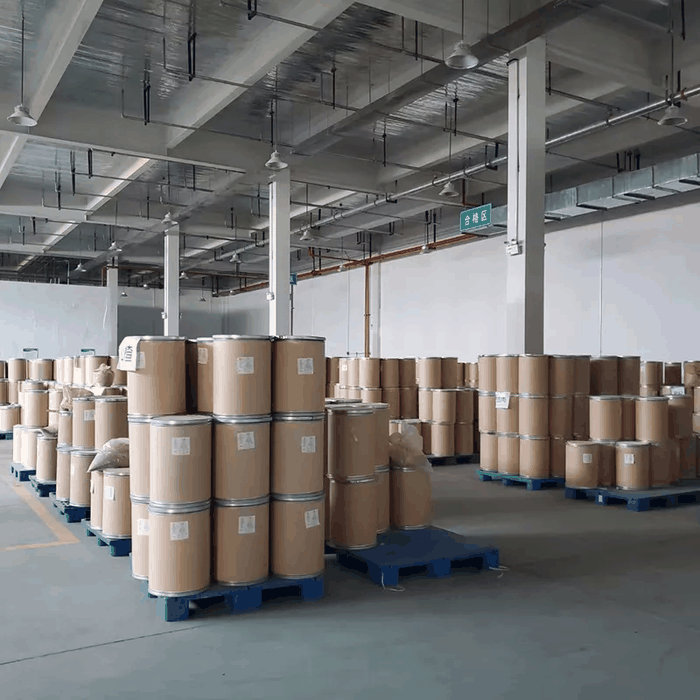Aloe vera
- CAS NO.:85507-69-3
- Empirical Formula: C16H13NO3
- Molecular Weight: 267.27932
- MDL number: MFCD04118389
- EINECS: 287-390-8
- Update Date: 2024-12-18 14:08:52

What is Aloe vera?
The Uses of Aloe vera
aloe vera is an emollient and film-forming gum resin with hydrating, softening, healing, anti-microbial, and anti-inflammatory proper ties. It is most widely recognized for its moisturizing capacity. Aloe vera supplies moisture directly to the skin tissue. other properties include moisture regulation and an apparent ability to absorb uV light. It has a slightly relaxing effect on the skin, making it valuable for sensitive, sunburned, and sun-exposed skins. Aloe vera was popular in traditional medicine to heal burns. It is often used in gels to refresh and calm irritated skin, hence its popularity in sun preparations for cooling and soothing. In addition, it is found to be effective in emulsions formulated for regulating dry skin. There is some indication that aloe vera has a synergistic effect when used in conjunction with other anti-inflammatory substances. Concentrations over 50 percent have been shown to increase the blood supply to the area of application. Although aloe vera’s important constituents are minerals, polysaccharides, amino acids, and carbohydrates, it is about 99.5 percent water. Its benefit in a skin care product depends on the appropriate concentration, as different concentrations result in different benefits and end products. An almost odorless and nearly colorless extract, it is derived from the sap of the aloe leaf. It is used in cosmetics in a gel form (also referred to as an extract) or in a diluted version referred to as aloe vera juice.
Definition
Extractives and their physically modified derivatives such as tinctures, concretes, absolutes, essential oils, oleoresins, terpenes, terpene-free fractions, distillates, residues, etc., obtained from Aloe vera, Liliaceae.
Anticancer Research
A. vera is an herbal remedy promoted as treating a variety of illness (Lust 2014).These two herbal remedies act together as a means to cleanse the colon and eliminatetoxins which could accumulate in the digestive tract causing disease; they alsofunction as an anti-inflammatory agent (Kapoor 2000).
Properties of Aloe vera
| Density | 0.688g/cm3 at 23.3℃ |
| form | Solid:crystalline |
| EPA Substance Registry System | Aloe barbadensis extract (85507-69-3) |
Safety information for Aloe vera
Computed Descriptors for Aloe vera
Aloe vera manufacturer
ARRAKIS INDUSTRIES LLP
New Products
3-Iodophenylacetic acid 3-Pyridineacetonitrile, α-hydroxy- 2-Propanamine, 1-chloro-, hydrochloride (9CI) 3-(hexyloxy)-4-(pyridin-3-yl)-1,2,5-thiadiazole 2-Hexyn-1-ol Dibenzo-18-crown-6 Nickel(II) perchlorate hexahydrate, 98% 4-Bromophenylacetonitrile, 95% 3-Bromo-4-fluoroaniline, 97% Sodium tetraborate decahydrate, 98% Palladium(II) acetate, trimer, Pd 99% 4-Bromo-2-chlorotoluene, 97% N N Dimethylformamide Dimethyl Acetal (Dmf Dma) 2,3-Dichloro Benzoyl Cyanide [Side Chain] Bis(2-Chloroethyl) Amine Hydrochloride L-Glutamic Acid Diethyl Ester Hydrochloride 5-(Difluoromethoxy)-2-Mercaptobenzimidazole 1-Ethyl-3-(3-Dimethylaminopropyl)-Carbodiimide Hydrochloride [EDC Hcl] 1,4-Napthoquinone Bromoiodomethane Sodium Bicarbonate Methylene Dichloride (MDC) Ethyl Acetate Indole-3-Carbinol (I3C)Related products of tetrahydrofuran








You may like
-
 ALOEVERA POWDER 99%View Details
ALOEVERA POWDER 99%View Details -
 85507-69-3 98%View Details
85507-69-3 98%View Details
85507-69-3 -
 Aloe vera extract 98%View Details
Aloe vera extract 98%View Details
85507-69-3 -
 ALOE VERA EXTRACT (POWDER) 99%View Details
ALOE VERA EXTRACT (POWDER) 99%View Details
85507-69-3 -
 85507-69-3 ALOE VERA GEL CONCENTRATE POWDER 99%View Details
85507-69-3 ALOE VERA GEL CONCENTRATE POWDER 99%View Details
85507-69-3 -
 Cyclohexane, (2-propynyloxy)- 67967-07-1 98+View Details
Cyclohexane, (2-propynyloxy)- 67967-07-1 98+View Details
67967-07-1 -
 3-Iodophenylacetic acid 1878-69-9 98+View Details
3-Iodophenylacetic acid 1878-69-9 98+View Details
1878-69-9 -
 132945-75-6 (S)-1-Boc-3-methanesulfonyloxy-pyrrolidine 98+View Details
132945-75-6 (S)-1-Boc-3-methanesulfonyloxy-pyrrolidine 98+View Details
132945-75-6
